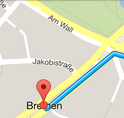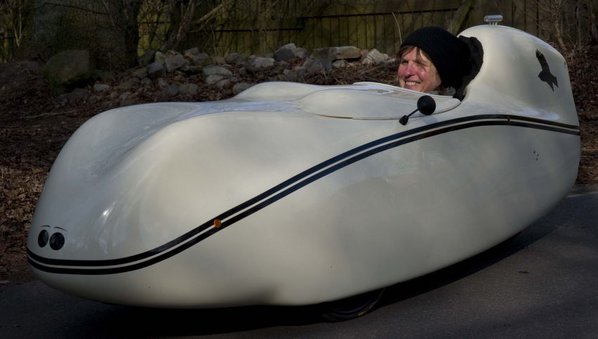
Make your daily commute to work your workout
Driving to work in the morning, trying to keep your cool in rush hour traffic on the way home after a long day at the office, and then getting in a round of exercise on the cross trainer or going out for a run… If that routine sounds all too familiar, the tips below might be just what the doctor ordered. We’ve also included a couple of ideas on how companies can encourage employees to use their own muscle power to get to work – a mode of transportation that is carbon neutral and beneficial to employees’ vitality, stamina and health, besides.
Why not get to work on muscle power?
In fast-paced societies such as ours, more and more people are feeling the need for deceleration. The basic idea behind the buzzword is simple: By approaching tasks in a more focused way, we can have more time left over for other things and create a better life-work balance, while still getting as much done as before.
So why not try the “decelerated” version of the all too familiar routine described above? Rather than driving or taking public transport to and from work and squeezing a workout into those precious hours of free time, why not integrate your workout into your daily life by cycling to work instead?
You’re still not convinced? Your commute is somewhere between 30 and 60 km and that’s just too far to cycle?
In that case, let me introduce you to the velomobile – a great alternative for speed junkies.
Velomobile
A velomobile is a kind of recumbent bicycle with an ultra-light aerodynamic carbon shell, allowing riders to achieve high speeds. Velomobiles are generally propelled purely by muscle power, but some are equipped with a battery-operated electric-propulsion system.
Velomobile riders can reach speeds of up to 50 km/h – even without the help of an electric assist unit or much training
For several months now, Agnes and Peter Graf have been using velomobiles for their 25 km commute to and from work whenever possible and when lighting conditions permit – for while the velomobiles’ lights themselves provide adequate illumination, the headlights of approaching cars can pose a problem at times, at least for some people.
Here’s a brief account of the Grafs’ experiences in their first months after switching to the velomobile:
It’s about 25 km to where we work in Bremen, and three-quarters of the way is through open countryside, i.e., through fields, along the river embankment and on agricultural roads with an asphalt surface. It’s perfect for cycling, so we decided to do something for our physical fitness and reduce our carbon footprint by riding our bikes to work.
But after six months of cycling to work during which we frequently battled headwinds, we decided to make the switch to velomobiles. They offer a major advantage: Their aerodynamic form allows us to achieve almost twice the speed we would on a bike with the same amount of effort. While we used to travel at about 20 km/h on our bikes, we easily make 35 km/h on our velomobiles – and on the stretch we call our “racecourse”, which is nice and flat and is protected from the wind because it’s a bit lower than the surrounding fields, we can sometimes even get up to 55 km/h.
Riding a velomobile is a lot of fun – and it hardly even seems like an effort! One of us leads the way, and we can just lean back comfortably and glide along noiselessly, sheltered from the wind. We’ve found that most drivers enjoy seeing our unusual vehicles and are very considerate. By trading a 40-minute drive for a 50-minute velomobile ride, we now get our workout on the way to and from work.
Creating incentives for employees
Getting your daily exercise on the way to work is all very well. The problem many people face is that that inevitably also means working up a good sweat – and most offices don’t have showers where they can freshen up afterwards. Companies should provide showers for employees whose commute is farther than five or ten km; this can create an incentive for people to get on the saddle or jog to work.
Here’s another idea: How about treating your employees to a voucher for a local bicycle shop? Many companies in big cities offer their employees financial incentives to use public transport – why not do the same to encourage people to jog and ride bicycles or velomobiles to work?
The first of these suggestions was inspired by an article featured on Telepolis (heise online), which you can read (in German) here: Kostenlose Duschen für Pendler. It describes a successful pilot project in Malmö, Sweden, where a railway station was converted into a “Bike and Ride” station. Cyclists can shower, change clothes, and perform minor repairs, and there are lockers where they can leave their clothes and their bikes if they wish – all free of charge. Larger companies could set up similar facilities for their employees.

